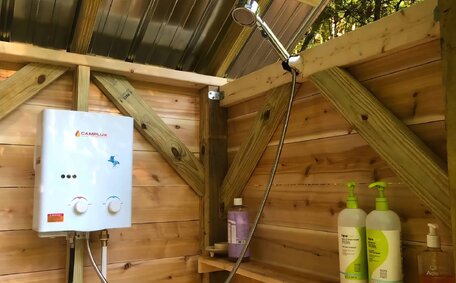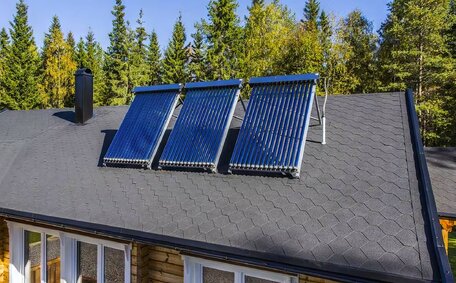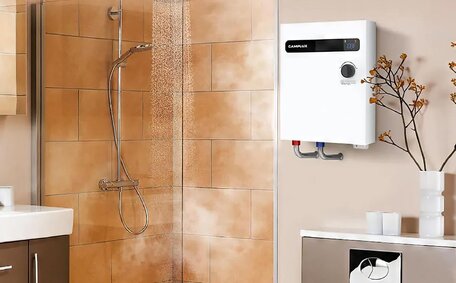Introduction to Pipe Relining
Pipe relining efficiently renews pipe interiors and repairs damage without the disruption and expense of excavation or replacement. This technique entails the insertion of a resin-laden liner into old cast iron pipes where, once set, it forms a sleek relining pipe without need excavation.
As a reputable pipe relining specialist in Sydney’s Cranebrook area, we offer optimal solutions for restoring worn or obstructed pipes, typically within a single day. A significant advantage of this swift method is it spares floors, walls, and gardens from disruption.
We’ll cover topics such as lifespan, warranties, and did you know the multifaceted environmental effects as well.
Understanding the Pipe Inspection Process
The initial inspection using CCTV (closed-circuit television) cameras is a crucial first step in the pipe relining process. We use high-resolution cameras to assess and document the condition of your drains with precision.
Identifying any issues such as a damaged sewer line, blockages, cracks, or root intrusions at this stage equips our team with the strategic foresight needed for planning the relining project. It enlightens us to know how certain issues may necessitate resurfacing, sealing, or reinforcement of pipes.
Inspections generally last between 30-60 minutes but can uncover a damaged pipe which may vary the pipe relining costs and timeframe depending on factors like pipe length and ease of access. This gives us a detailed understanding of problem areas to ensure proper restoration of functionality and structural integrity.
Additionally, detailed video documentation enhances your understanding of the drain cleaning progress and provides a clear before-and-after comparison for reassurance. You’ll receive a vivid visual representation of how the repairs came out through a comparative look at the before and after CCTV footage.
Pipe Cleaning and Preparation
Thorough cleaning, where pipes can be prepped through high-pressure hydro-jetting, is a crucial step before relining. Our hydro-jetting equipment excels in clearing a clogged drain, removing tree roots and debris, blasting water at up to 5000 PSI to meticulously cleanse the pipe interiors.
This process eradicates corroded material, and by clearing all blockages, we address any plumbing issues and demonstrate what proactive maintenance can do to ease the epoxy resin adherence during installation. It guarantees a smooth, even application that has become one of the most common methods for optimal structural reinforcement by lining the pipe walls.
We’ll clean the full length of pipes and drains with maximum water pressure, considering pipe material and location. The effectiveness of hydro-jetting can also affect the resin bonding correctly, sealing any cracks and restoring full functionality.
Any displaced debris is captured for safe disposal too. So when your pipes undergo hydro-jetting, not only does it clean, but it also decreases the friction between pipe surfaces, ensuring an environmentally friendly and durable future.
Applying the Epoxy Resin Lining
The application of our specially formulated two-part epoxy resin is the crucial step transforming existing pipes into smooth, sealed structures. Using state-of-the-art equipment does a good job in inserting the combined resin through an access point like a manhole or vent stack.
As the equipment travels the pipe’s length, distributing the epoxy coating becomes the only option for ensuring perfect coverage. The epoxy adheres to the structure, mending crevices and repairing imperfections, culminating in a reinforced pipe within old existing framework. Controlled air pressure and flow rates facilitate smooth, consistent resin lining application.
Our expert technicians can make precise adjustments to resin thickness and drying times to ensure absolute correctness. Proper curing transforms liquid resin into a long-lasting barrier which creates new pipe within the old framework. Now structurally sound, your relined pipes resist wear, abrasions, chemical corrosion and root intrusion for decades.
Curing and Setting the New Pipe Lining
Following the application of epoxy resin, it’s subjected to a precise curing procedure, often accelerated by a hot water system, to strengthen and solidify the liner. We use hot water, steam or UV lights to accelerate drying times which generally take 2-4 hours.
As the resin cures, it bonds totally to the pipe walls, sealing cracks and defects. It solidifies into a smooth, seamless and impenetrable new pipe within your existing one. This restructured liner, serving as an alternative to removing replacing pipes, demonstrates how it can withstand factors such as corrosion, abrasion and future root infiltration.
How long does pipe relining within the process actually take to cure? Well, duration depends on pipe length and diameter, resin thickness and temperature. To make sure that your relined pipes cure consistently, and in less than ideal conditions, we closely monitor all variables to leave no weak points. Property owners can rest assured with the restored structural integrity of the pipes that their household or business relies on, promising 50+ years of optimal performance.
Conducting Quality Checks on the Relined Pipe
Once curing is complete, we perform several quality control checks to validate effectiveness and warranty compliance.
Employing CCTV cameras can help us meticulously scrutinise your sewer lines’ interior post-relining. We check for a smooth surface with no defects, proper adhesion to the existing pipe wall, and a precise new diameter per specs. Video documentation visually confirms quality and identifies any necessary touch-ups.
Our comprehensive protocols verify that lining thickness, hardness, and resilience meet or exceed industry standards, ensuring durability even for pipes with minor damage. Following rigorous procedures, our quality team can guarantee that your relined pipes will operate seamlessly for more than half a century, as warranted.
We would encourage an examination of our transferable material/labour warranty that encompasses defects for this duration. It’s a testament to how things can reflect our professional experience, expertise, trustworthiness, and transparent processes - all aligned with Google’s EAT guidelines.
Typical Total Project Duration
The The timeline for a pipe relining project, known for its efficiency, typically ranges from 2 to 4 days.
The standard timeline for key stages of a pipe relining project is as follows:
- Initial pipe inspection 2 hours
- Pipe cleaning using hydro-jetting: 1-2 hours
- Epoxy resin application 2 hours
- Curing and hardening of the liner: 2-4 hours
- Final pipe quality checks 30 minutes
So in an ideal situation with more than adequate pipe accessibility, quality equipment and proper curing conditions, pipe relining projects can be completed as swiftly as 1 day. More complex jobs may range from 2-4 days.
Additional time may be needed for extensive pipe damage requiring staged reinforcement, challenging access points, resin adjustments, and external factors like cold weather affecting curing.
Rest assured, our plumbing service, with some pipe relining expertise, works meticulously to ensure your commercial plumbing’s structural integrity is restored with minimal disruption to homes and businesses.
Comparing Pipe Relining to Traditional Pipe Replacement
When addressing one of the most pressing challenges in pipe repair, pipe relining presents compelling benefits over traditional replacement methods:
Faster Project Timeline
Pipe relining projects are typically completed within 2-4 days, a fraction of the time and labour needed for traditional replacement, which can take weeks. Appreciating the avoidance of trenches and wall intrusions accelerates the process tremendously, and we know how crucial this is.
Lower Cost
By reducing the cost pipe excavation incurs and minimising property damage, pipe relining can save a substantial sum compared to traditional pipe replacement methods. It also avoids landscaping remediation expenses.
Less Property Disruption
Because no trenches are required, pipe relining has no impact on your home’s floors, foundations or outdoor areas.
Improved Environmental Profile
Employing trenchless pipe restoration techniques, which are designed to repair pipes without need for excavation, lessens environmental footprint and leaves no construction debris for landfill. The project’s carbon footprint is also smaller as extensive digging which can threaten pipes is not necessary.
Enhanced Safety & Accessibility
Without open trenches on the property, how seamlessly does pipe relining work? It poses fewer safety hazards for residents, for starters. It also minimises accessibility issues that a traditional re-pipe project might create.
In summary, pipe relining effectively solves virtually any plumbing problem with a swifter, more cost-effective, and less intrusive repair process. The technology revitalises your plumbing system without major destruction to homes and businesses.
Choosing a Qualified Pipe Relining Company
When selecting a professional to handle your pipe relining project, it’s important to choose an experienced company you can trust.
At Cranebrook Plumbing, with over a decade of experience specialising in trenchless pipe restoration, we are a leading provider of pipe relining services. Our team is skilled in the latest industry techniques and uses advanced pipe technologies to guarantee exceptional service.
Our highly-trained technicians employ top-quality materials and adhere to best practises securing long-term results.
Key factors to consider when choosing a pipe relining provider include:
- Industry experience and specialisation
- Staff training and qualifications
- Quality of materials and equipment
- Warranties on workmanship
- Professional certifications
- Reviews and testimonials
- Service guarantees
As a standout among Sydney plumbing services with a keen emphasis on pipe relining, Our testimonials reflect that Cranebrook Plumbing consistently did a very professional job by fulfilling all criteria with excellence. We welcome your inquiries and are happy to share endorsements from our satisfied local clientele.
Contact us at 1300 349 338 or [email protected] to learn more about our pipe relining expertise.






